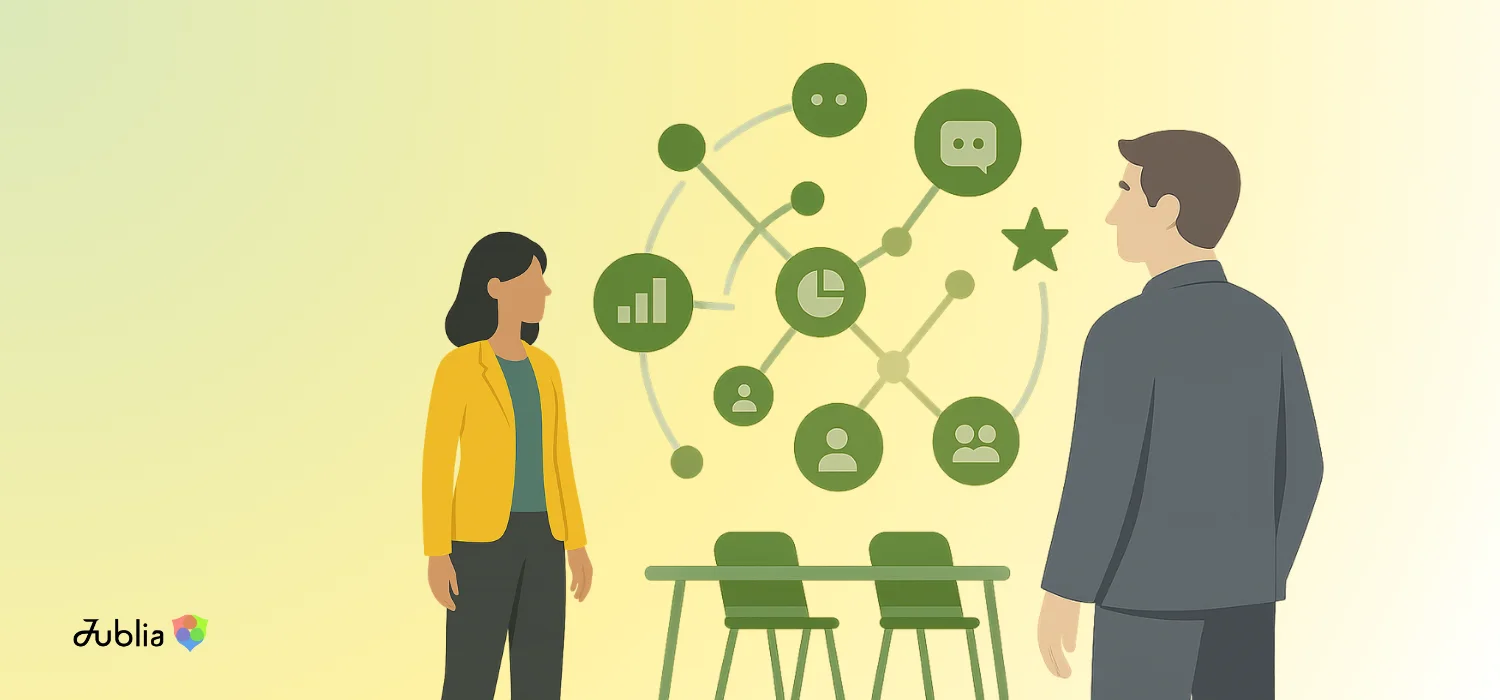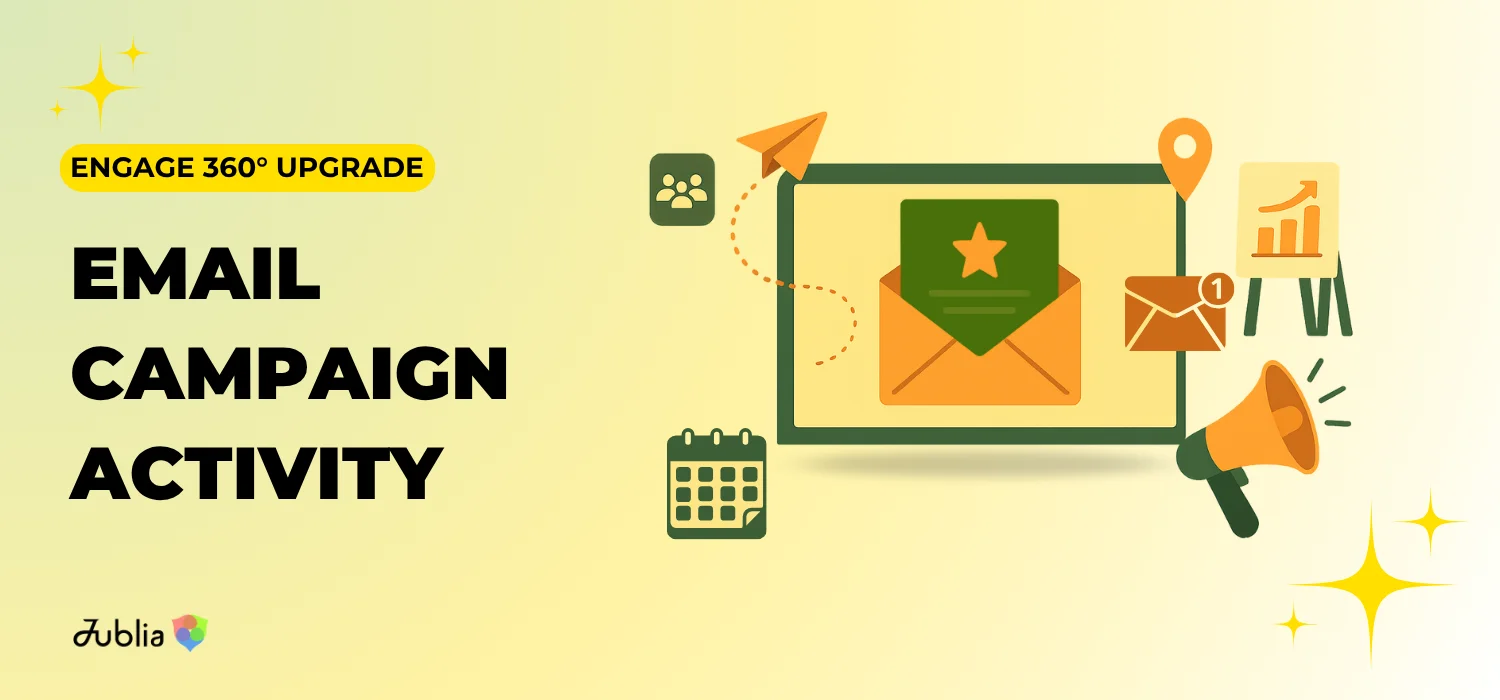Join our newsletter for the inside scoop on Jublia and the events industry


Before your event even begins, your attendees are already making decisions. Some are taking the time to build out their profiles in full detail. Others are scrolling through the session lists, saving one or two that catch their interest. A few are already sending out meeting requests. Most aren’t saying much, but they’re observing, clicking, hesitating, and exploring.
At first glance, all of this can seem like standard behavior, just normal browsing activity, but there’s more going on beneath the surface. Every action they take, every scroll, save, favorite or match, isn’t just about interacting with your event platform. It reflects how they think, what they feel, and what they’re hoping to gain from the experience.
This is where psychology comes in. And if you, as an event organizer, want your event to connect with your audience from the very first tap, it’s worth listening to the story your pre-event data is already telling.
Event organizers often focus on logistics: building programs, setting up floorplans, launching campaigns. But beyond the operational checklist lies a more important goal, shaping how attendees make decisions. What you’re really doing is guiding them toward what to care about, who to meet, and where to spend their time. And before the event even starts, people are already making choices based on emotion, perception, and internal motivation. Here are a few examples:
When someone bookmarks a session, they’re not just organizing their calendar. They’re imagining themselves being there. That small act is an early sign of pre-commitment, a psychological concept where people are more likely to follow through on something once they’ve taken even a minor step toward it. By saving a session, they’ve signaled that it matters to them personally, and that makes attendance far more likely.
Offering a wide range of sessions can seem like a strength, but without filters or structure, it often leads to choice overload. This cognitive state where too many options become overwhelming, causes people to avoid making any decision at all. When attendees face an endless scroll of equally weighted choices, they may disengage completely, not because they don’t care, but because they don’t know where to start.
Sending a meeting request, even in a business setting, involves a degree of risk. It means stepping outside one’s comfort zone and opening the door to possible rejection or awkwardness. This ties into the idea of social risk-taking, where people weigh the potential social cost of their actions. Attendees are far more likely to reach out when they perceive psychological safety, a sense that there’s shared purpose, mutual value, or at least some common ground.
As organizers, your event app isn’t just a utility, it’s a test of how comfortable and confident your attendees feel engaging with your event. This experience is shaped by cognitive fluency, a psychological principle describing how people prefer things that are easy to understand and use. When your app feels smooth and intuitive, people are more likely to explore it fully. If it feels complicated or unclear, even valuable features may go untouched.

Pre-event data is a window into what your audience is thinking and feeling, long before they walk into your venue. Every action they take beforehand, offers subtle clues about their intentions, priorities, and expectations. By interpreting these digital signals, organizers can better understand motivations and shape more meaningful event experiences.
When attendees fill out their profiles, they’re not just inputting data. They’re defining their identity for the event. Their listed interests, match preferences, and selected roles reflect how they want to be seen and what they’re looking to achieve. Psychologically, once someone states a goal - even digitally - they’re more likely to follow through on it. That makes profile data incredibly valuable for personalizing their journey.
If someone clicks on a speaker’s bio or favorites a session, it’s a sign that the topic is resonating with them. On the flip side, if certain sessions are consistently ignored or skipped over, it may mean they’re not connecting or that people are overwhelmed and unsure where to focus.
People tend to engage with content that feels timely, emotionally relevant, or helpful in solving a specific problem. Recognizing these patterns allows you to highlight the sessions that truly resonate and adjust how you frame others.
When attendees send meeting requests or accept matches, they’re signaling that they see potential value in that interaction. Repeated engagement with the same contact is often a sign of growing trust and curiosity.
This behavior is rooted in principles like reciprocity and similarity. We tend to connect more readily with people who reflect our own goals or interests. To support this, using AI-powered matchmaking can help surface more meaningful, relevant connections based on shared intent, not just job titles or industries.
Attendee behavior within your event app can tell you a lot, assuming you know what to look for. Logging in once and not returning often points to friction, which could stem from a confusing interface, a lack of clear onboarding, or simply not seeing immediate value.
In contrast, repeated engagement, especially after receiving push notifications or interacting with personalized content, signals growing trust. When the app feels useful and easy to navigate, it naturally becomes part of how attendees prepare, plan, and participate.
Jublia’s Native App is designed to deliver that kind of experience. It keeps attendees engaged with timely, relevant push notifications about upcoming meetings, saved sessions, and in-app updates that matter to them. Meanwhile, organizers can monitor engagement trends on the backend, gaining valuable insights into how the app is being used and which features are delivering the most impact throughout the event.
Knowing how attendees think is powerful and only useful if you act on it. Guide behavior by sending personalized push notifications that encourage exploration and follow-through. Match attendees not just by role or industry, but by shared goals, challenges, or intent, this leads to more meaningful conversations. Give exhibitors a clearer picture, too. Instead of just badge counts, equip them with behavioral insights: what attendees have saved, who they’ve matched with, and what they’re looking for. And to help everyone move with ease, what you should be doing is to reduce decision fatigue. Curated agendas, smart filters, and trending highlights can help attendees make better choices.
When your event design aligns with how people actually think and behave, good things happen. Attendees feel more confident and committed. Leads become more qualified, because intent is clearer. Exhibitors make better, faster connections. And the event itself becomes smoother, more focused, and more memorable for everyone involved.
Pre-event behavior isn’t just noise, it’s insight. Every profile completed, session bookmarked, and meeting requested reflects a decision, often rooted in psychology. When you pay attention to these signals and design around them, your event becomes more organized and more intentional. At Jublia, we believe that smarter data leads to deeper engagement. If you’re curious about how our Jublia Engagement Hub can turn these insights into action, our Solutions Specialists are here to help. Let’s talk about building an experience that thinks like your attendees do.
 Building Sustainable Connections at Hong Kong’s Flagship Event for Sustainable Business
Building Sustainable Connections at Hong Kong’s Flagship Event for Sustainable Business A Case Study on ReThink HK 2025
 Attendee Behavior Patterns You Shouldn’t Ignore
Attendee Behavior Patterns You Shouldn’t IgnoreUncover how understanding attendee behavior turns raw engagement data into actionable insights
 Email Engagement That Works: How to Power Your Business Events with Smarter Campaigns
Email Engagement That Works: How to Power Your Business Events with Smarter CampaignsCampaigns work best when targeted and timely — not generic blasts.


